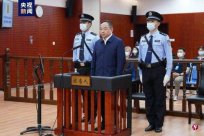China National Development and Reform Commission and other departments jointly issued a new policy for promoting automobile consumption, proposed to optimize the management policy of automobile purchase restrictions, increase the support of car consumer credit, encourage automobile companies to develop practical economic models, and emphasize that local protection policies cannot be issued to avoid being avoided to avoidVicious competition.
According to the "National Development and Reform Commission" WeChat public account on Friday (July 21), the National Development and Reform Commission, the Ministry of Industry and Information Technology, the Ministry of Public Security, the Ministry of Finance, the Ministry of Housing and Urban -Rural Development, the Transportation of the Ministry of Housing, the Ministry of Housing, the Transportation, and Transportation13 departments including the Ministry of Transport, the Ministry of Commerce, and the People's Bank of China have studied and formulated several measures to promote car consumption to further stabilize and expand the consumption of automobiles and promote the continuous recovery of consumption.
The document pointed out that the car consumption is large, the potential is sufficient, and the industrial driving role is strong. Promoting the car consumption has a positive effect on stabilizing China's consumption market and promoting the high -quality development of the industrial chain.It is necessary to further stabilize and expand automobile consumption, optimize the management system and market environment of automobile purchase, and promote the sustainable and healthy development of new energy vehicles.
Files propose 10 measures at the level of consumers, corporate supply, policy subsidies and other aspects.
From the consumer level, the document requires the optimization of automobile purchase management policies, encourages the annual car purchase indicators as soon as possible, and increases annual car purchase indicators for the release of annual car purchase indicators.The illegal non -standard commercial vehicle was scrapped, promoted the exit of old vehicles, and accelerated the elimination and update of old vehicles.Documents also encourage localities to implement policy measures such as cancellation of second -hand car restrictions and convenient second -hand car transaction registration, and at the same time encourage second -hand car exports with relevant quality requirements.
In terms of infrastructure construction, the document mentioned that the construction of new energy vehicles should be strengthened, and the construction of fields such as townships, counties, highways, and residential areas to charging infrastructure construction, guiding usersNetwork interaction; focus on improving the carrying capacity of rural grids, rationally improve the investment and upgrading of rural grid transformation and upgrading, and ensure the steady improvement of power supply reliability indicators.
In terms of policy subsidies, the documents propose that the policy and measures that continues and optimize the purchase tax reduction and exemption of new energy vehicles will be implemented, and the electricity price of residential charging facilities in the residential community will be promoted.Facilities operators reduce charging service fees in stages, and encourage localities to give discounts on charging urban bus vehicles.By 2030, the electricity cost of the electricity cost (capacity) of the electricity and replacement facilities that implement the two parts of electricity prices will be used to increase the amount of electricity costs (capacity); promote the increase in the number of new energy vehicles procurement in the public field, and support the official affairs, bus, rental, rental, rent, rent, and rental of suitable areas.In principle, the purchase of new energy vehicles in public areas such as postal, sanitation, and gardening in principle encourages rural passenger and cargo post -finance vehicle updates to new energy vehicles.
The document also mentioned that it is necessary to strengthen the consumer financial services and increase the support of car consumer credit. Under the premise of compliance and risks in accordance with laws and regulations, financial institutions should reasonably determine the down payment ratio, loan interest rate, and alsoDuring the term, support insurance companies to develop innovative products such as insurance vehicle charging pile insurance; encourage automobile companies to develop economic practical models, and optimize the rich cost -effective and cost -effective organizational models for the use of economic practical models such as production, life, transportation, and the integration and development of passenger and shipping.The supply of models provides consumers with a diversified option.
The documents also encourage localities to effectively expand the supply of parking spaces and make reasonable formulation of parking toll policies.All localities can reasonably set up night road parking spaces according to the actual situation; increase financial support, and accelerate the construction of three -dimensional parking lots, smart parking lots and equipment configuration in dense places and scenic spots.
In addition, the document also supports relevant industry associations, chambers of commerce, automobile companies, financial institutions, and other car promotion activities, but it is not allowed to issue local protection policies to avoid malignant competition.




